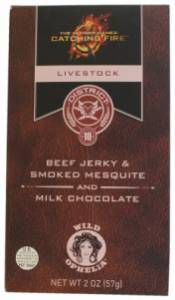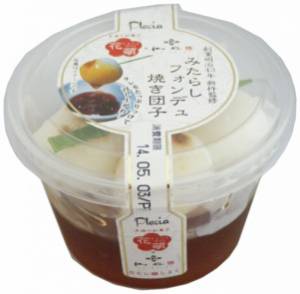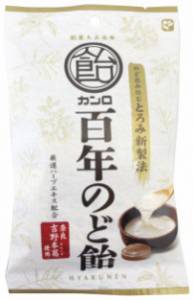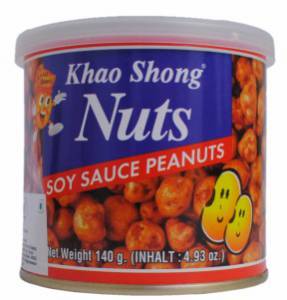Soy sauce is one of the world’s oldest condiments and has been used in Asia for more than 2,500 years. It is rapidly proving its flexibility by featuring in different types of products that target different markets and demographics. We look at a few creative ways brands are innovating with Soy Sauce…
More than just a condiment
Soup Soy Sauce for Babies
Launched in South Korea, September 2014, Nave S&F Sim Yeong Sun Soup Soy Sauce for Babies is new to the range. The sauce is comprised of 43% thick soy sauce, featuring domestic wheat and domestic soy and has been seasoned with brisket and flank, anchovy, kelp and shiitake mushrooms. The sauce also features a reduced sodium content and can be used to prepare mild and deep-flavoured soup dishes. Most importantly, it is suitable for babies aged 12 months and over. The product retails at KRW 6900.00 ($6.31).
Beef Jerky & Smoked Mesquite and Milk Chocolate
Launched in the US, November 2013, Wild Ophelia Beef Jerky & Smoked Mesquite and Milk Chocolate has been inspired by The Hunger Games Catching Fire Movie District 10 Livestock. The beef jerky used in the product comes from cattle treated humanely. Soy sauce is used in Jerky as it contributes salt for curing, blends spice flavours, enhances meaty flavours, contributes colour and can enhance or even replace preservatives. Soy sauce can also be used in chocolate to round the cocoa flavor, moderate sweetness and add to the colour. The chocolate is processed using renewable energy and the packaging is made with 100% recycled cardboard. The product retails at $3.99.
Sweet Soy Sauce Mochi Dessert
Launched in Japan in May 2014, Plecia Watashi No Shifuku Hana Mitarashi Fondue Yakidango (Sweet soy sauce grilled mochi dessert) features frilled mochi rice cake balls and sweet soy sauce dipping sauce. The product retails for JPY 204.00 ($1.81).
100-Year Throat Lozenge
Launched late September 2014 in Japan, Kanro 100-Year Throat Lozenge is described as a unique product with a thick, mellow texture that embraces throat discomfort. It is formulated with starch from the brands Nara and Yohino, selected herb extracts and soy sauce. The product retails at JPY 172.00 ($1.61).
Soy Sauce Peanuts
Khao Shong Nuts Soy Sauce Peanuts launched in Thailand, January 2015. The large-grain peanuts are partly coated with a speciality mix of soy sauce and seasoning and uses an inherited roasting process. The product retails for INR 225.00 ($3.77).
Soy sauce can be applied to various food categories beyond where you would expect to find it – from savoury to sweet, Asian to mainstream. As well as the examples above, here are some other categories soy sauce can be found – highlighting just how versatile soy sauce can be:
- Bacon/cured meats: Adds colour, balances sweet and smoky flavours
- Beef: Adds savoury flavour and aroma, adds colour, helps blends spice flavours
- Bread & Rolls: Helps blend yeast and grain flavour notes, adds colour
- Cookies & cakes: Helps blend flavours and adds complexity, tempers sweetness, adds colour
- Dry mixes: Adds savoury notes and colour; enhances aroma and flavor; granulated forms dissolves easily when prepared at home
- Dressings: Adds savoury flavor, helps temper vinegar, rounds spice flavours, contributes preservation to cold filled dressings, adds colour, can be used to replace Worcester sauce
- Snacks: Blends flavours of other seasoning ingredients, contributes salt, enhances colour and savoury flavour
Appealing to health-conscious consumers
Although 60% of Chinese consumers agree they look for no additives or preservatives when buying sauces and seasonings, many modern manufacturers artificially break down the soy proteins by a chemical process known as hydrolysis because it is much faster. However, Japanese brands are now creating soy sauce as a by-product of fermented soybeans and wheat mixed with brine, using a fermentation process which can take up to six months to complete. This natural brewing method allows brands to qualify the product as Clean Label and naturally brewed soy sauce can also reduce up to 50% sodium chloride in cooked foods.
Soy sauce is no longer a condiment limited to the Asia Pacific region. Opportunities exist in many applications for manufacturers to use soy sauce as a versatile, salt-reduced and clean label ingredient to appeal to more consumers, all around the world.
For more information see Mintel’s Sauces and Seasonings China 2014 report.












































